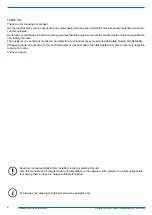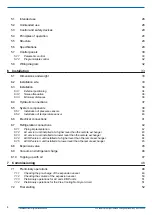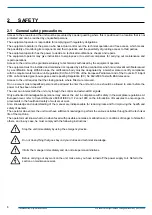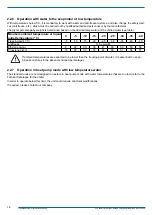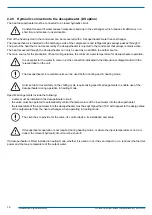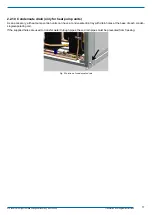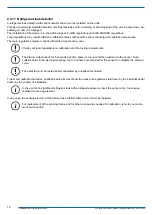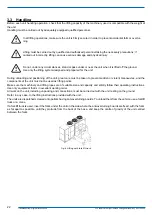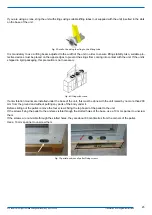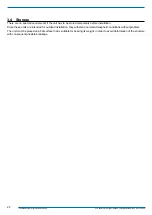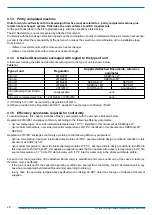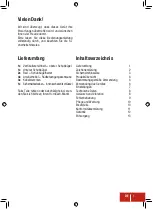
12
We reserve the right to make changes without any prior notice.
Translation from original instructions
2.2.3 Minimum water content in the system
For correct operation of the unit, it is necessary to ensure a buffering on the system such as to comply with the minimum
operating time considering the greater between the minimum OFF time and the minimum ON time.
In short, these contribute to limiting the number of times the compressors are switched on per hour and to preventing un-
desired deviations from the set point of the delivered water temperature.
The following experimental formula allows the minimum water volume of the system to be calculated:
where
v = Minimum water content of the system [ l ]
Ρtot = Total refrigeration capacity [kW]
N = N° of capacity reduction steps
Δτ = Time interval – the greater between minimum OFF time and minimum ON time [s]
ΔΤ = Allowed differential on the water temperature [°C](unless specified, this is 2.5°C)
ρ = Water density 1000 [kg / ³]
Сp = Specific heat of water 4.186 [kJ / (kg°C)]
Fm = Q factor: experimental factor, different from 1 for some types of unit
K1 = Experimental multiplying constant depending on the type of compressor
With some terms grouped together, the formula can be rewritten as follows:
If the carrying fluid consists of mixtures of water-glycol (ethylene or propylene), the density and specific heat values must
consequently be adjusted.
For units with scroll compressor, the constants used in the formula assume the following values:
K [l/kW]
17,2
N
For units without inverter = the number of compressors installed in the unit
For units with single-compressor inverter = 3
For units with a dual-compressor inverter (1 inverter cmp + 1 on/off cmp) = 6
For units with a three-compressor inverter (1 inverter cmp + 2 on/off cmp) = 9
Fm
1
K1
0,25
The constant K considers that the maximum between the minimum ON and OFF time is Δτ=180s.
Larger amounts of water are in any case always preferable, because they allow a smaller number of stops and starts of the
compressors, less wear of them and an increase in the efficiency of the system as a consequence of a reduction in the num
-
ber of transients. It should also be pointed out that, for air-water units working in heat pump mode, the minimum amount of
water must consider the need of the unit to carry out defrosting. Having an adequate buffering volume will allow prevention
of too high drifts of the delivered water temperature at the end of the defrost cycle.


